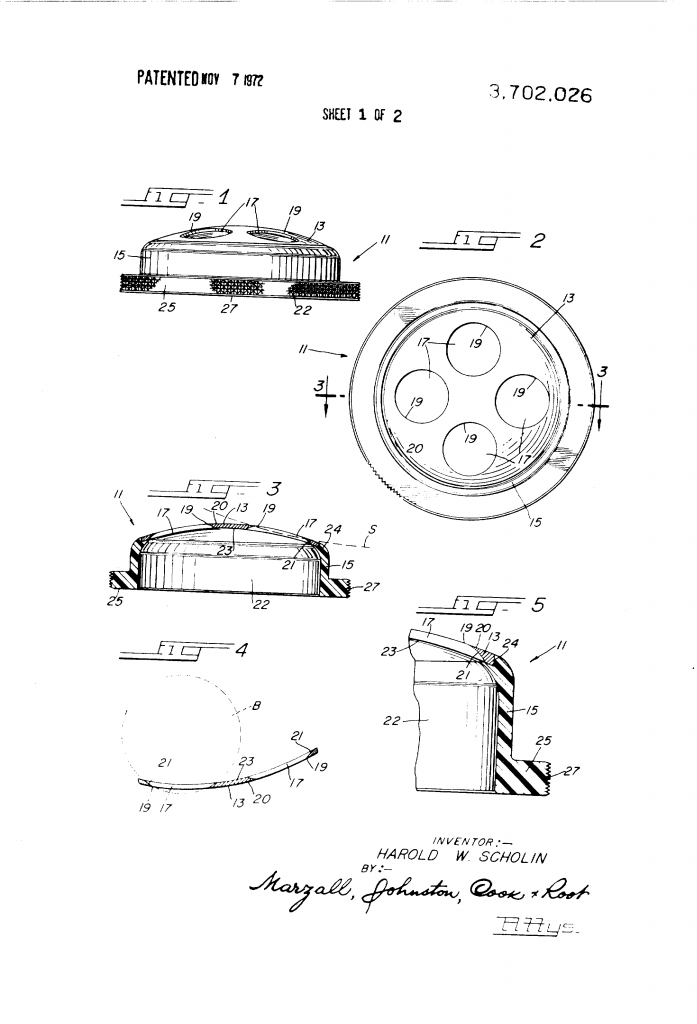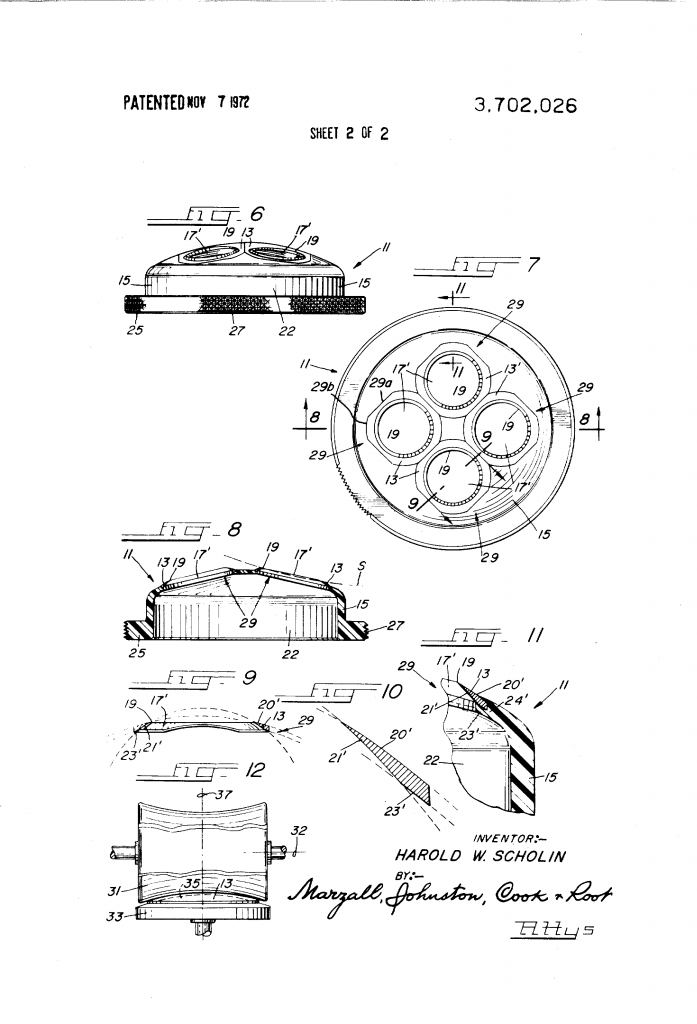Who says a razor blade have to be flat? What if it was a segment of a sphere, with four or more cutting edges? The blade would in effect be a self contained spherical razor.
I mean, there is a couple of glaring problems with the idea, but even so. It isn’t the first all edge and no point razor we’ve looked at.
Invented and patented by a Mr Harold W Scholin, the invention was claimed to be a new and improved form of razor blades.
An important object of the invention is to provide a razor embodying outwardly dished blade means having an opening formed with a marginal, inwardly facing cutting edge; a further object being to provide a razor having a plurality of adjacently arranged circular cutting edges each formed at and peripherally of a hole in a razor blade element; another object being to provide a razor comprising a plurality of adjacent razor blade elements each having a single opening therethrough and edge sharpened to provide a peripheral, inwardly facing razor edge; a still further object being to provide a razor embodying a spherically shaped blade element having one or more edge sharpened holes formed therethrough.
From US patent 3,702,026
Another important object is to provide a razor blade formed with one or more edge sharpened holes therethrough wherein the holes are large enough to permit a skin surface being shaved to bulge or protrude through the opening only sufliciently to permit hair to be sliced off at the skin surface, the protrusion of skin into the hole being less than enough to permit the sharpened edges to slice into the skin surface; a further object being to form the blade with shaving openings having diameter of the order of three to five eights of an inch; a still further object being to space the openings circularly about a central locus in the plate, and to provide not less than three nor more than five openings in the blade; yet another object being to provide exactly four equally spaced openings in the blade, and to employ 7/16 inch diameter openings, which appears to be an optimum size.
Another important object of the invention is to form a shaving edge at the margin of a hole in a razor blade element by grinding the same spherically on one side of the blade.
Another important object is to provide a razor by embedding the marginal edges of a plate-like razor blade element having one or more edge sharpened holes therethrough in a holder ring of plastic or other suitable material to provide a handle for the manipulation of the blade.
That is a lot of objectives for a single invention. Let us try to summarise. The razor should:
- Have a outwardly dished blade.
- Have several holes next to each other.
- Each hole should have a sharp edge.
- The hole shouldn’t be so large as to let the user cut himself.
- The holes should be symmetrical around the centre.
- Having three to five holes.
- Having edges formed by grinding,
- And having a rind of plastic around the outer edge to hold it.
Which is a lot of words to show the spherical razor blade shown in the drawings.


Now I see two big issues with this spherical razor. Firstly, it will be awkward to use. You’ll have to grasp it with three or so fingers, and twist and turn the wrist to get into all the nooks and crannies.
Secondly, I do believe that a user would cut himself on this one. A pimple or ingrown is more than small enough to fit into the 11mm hole suggested. And more than big enough to bleed like a stuck pig.
Perhaps a bigger roadblock to the success of Harold’s spherical razor was the fact that in 1971 the traditional safety razor was not only well established, but the first disposables and carts were slowly entering the markets. As such, it seems to have sunk without a trace.
Well, one trace exists – the patent which you can read at Google Patents.

Pingback: Spherical razor - Razors n Blades the shave that saves